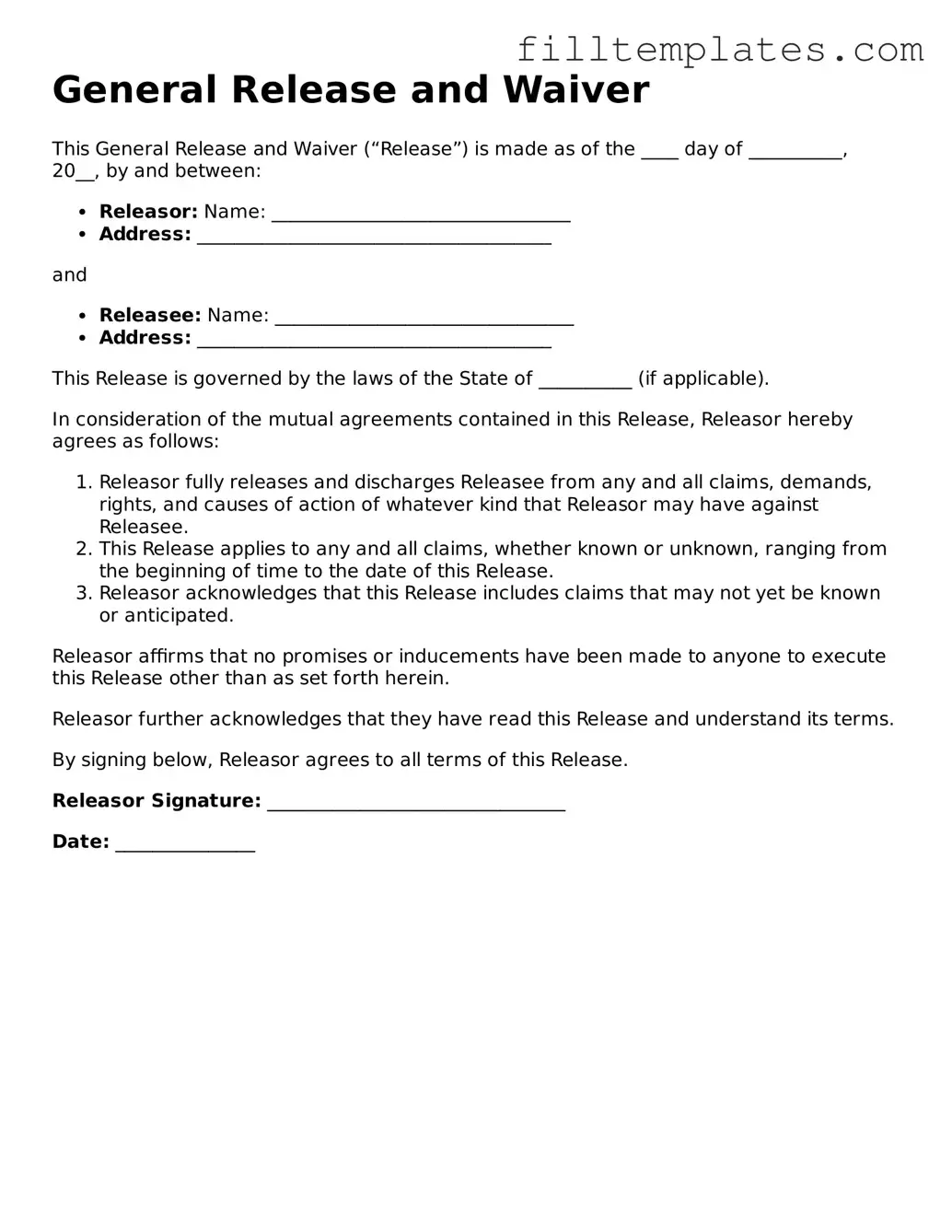General Release and Waiver
This General Release and Waiver (“Release”) is made as of the ____ day of __________, 20__, by and between:
- Releasor: Name: ________________________________
- Address: ______________________________________
and
- Releasee: Name: ________________________________
- Address: ______________________________________
This Release is governed by the laws of the State of __________ (if applicable).
In consideration of the mutual agreements contained in this Release, Releasor hereby agrees as follows:
- Releasor fully releases and discharges Releasee from any and all claims, demands, rights, and causes of action of whatever kind that Releasor may have against Releasee.
- This Release applies to any and all claims, whether known or unknown, ranging from the beginning of time to the date of this Release.
- Releasor acknowledges that this Release includes claims that may not yet be known or anticipated.
Releasor affirms that no promises or inducements have been made to anyone to execute this Release other than as set forth herein.
Releasor further acknowledges that they have read this Release and understand its terms.
By signing below, Releasor agrees to all terms of this Release.
Releasor Signature: ________________________________
Date: _______________
